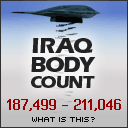Date: 8 Nov 2007Author: National Alliance to End HomelessnessFiles:Full Report: Vital Mission: Ending Homelessness Among Veterans (PDF | 2.03 MB | 36 pages)">Full Report: Vital Mission: Ending Homelessness Among Veterans (PDF | 2.03 MB | 36 pages) Homelessness Research Institute Releases New Report on Homeless Veterans (PDF | 98 KB | 3 pages)"> Homelessness Research Institute Releases New Report on Homeless Veterans (PDF | 98 KB | 3 pages) Snapshot: Vital Mission: Ending Homelessness Among Veterans (PDF | 308 KB | 2 pages)"> Snapshot: Vital Mission: Ending Homelessness Among Veterans (PDF | 308 KB | 2 pages) Veterans Returning from Iraq and Afghanistan (PDF | 56 KB | 2 pages)"> Veterans Returning from Iraq and Afghanistan (PDF | 56 KB | 2 pages)
These findings highlight the need to expand homeless prevention and affordable housing programs targeted at veterans. Further the findings demonstrate that ending homelessness among veterans is a vital mission that requires the immediate attention of policymakers. |
General Convention
Thursday, November 08, 2007
Homeless Vets - Shame, shame, shame on US
Monday, November 05, 2007
The War
The Million Dead, too, summ'd up -- The Unknown.
-- The Dead in this War -- there they lie, strewing the fields and woods and valleys and battle-fields of the South -- Virginia, the Peninsula -- Malvern Hill and Fair Oaks -- the banks of the Chickahominy -- the terraces of Fredericksburgh -- Antietam bridge -- the grisly ravines of Manassas -- the bloody promenade of the Wilderness -- the varieties of the strayed dead, (the estimate of the War Department is 25,000 National soldiers kill'd in battle and never buried at all, 5,000 drown'd -- 15,000 inhumed strangers or on the march in haste, in hitherto unfound localities -- 2,000 graves cover'd by sand and mud, by Mississippi freshets, 3,000 carried away by caving-in of banks, &c.,) -- Gettysburgh, the West, Southwest -- Vicksburg -- Chattanooga -- the trenches of Petersburgh -- the numberless battles, camps, Hospitals everywhere
-57-pass'd away since that War, and its wholesale deaths, burials, graves. (They make indeed the true Memoranda of the War -- mute, subtle, immortal.) From ten years' rain and snow, in their seasons -- grass, clover, pine trees, orchards, forests -- from all the noiseless miracles of soil and sun and running streams -- how peaceful and how beautiful appear to-day even the Battle-Trenches, and the many hundred thousand Cemetery mounds! Even at Andersonville, to-day, innocence and a smile. (A late account says, 'The stockade has fallen to decay, is grown upon, and a season more will efface it entirely, except from our hearts and memories. The dead line, over which so many brave soldiers pass'd to the freedom of eternity rather than endure the misery of life, can only be traced here and there, for most of the old marks the last ten years have obliterated. The thirty-five wells, which the prisoners dug with cups and spoons, remain just as they were left. And the wonderful spring which was discover'd one morning, after a thunder storm, flowing down the hillside, still yields its sweet, pure water as freely now as then. The Cemetery, with its thirteen thousand graves, is on the slope of a beautiful hill. Over the quiet spot already trees give the cool shade which would have been so gratefully sought by the poor fellows whose lives were ended under the scorching sun.')
And now, to thought of these -- on these graves of the dead of the War, as on an altar -- to memory of these, or North or South, I close and dedicate my book.
Walt Whitman
In Flanders Fields By: Lieutenant Colonel John McCrae, MD (1872-1918) Canadian Army
IN FLANDERS FIELDS the poppies blow
Between the crosses row on row,
That mark our place; and in the sky
The larks, still bravely singing, fly
Scarce heard amid the guns below.
We are the Dead. Short days ago
We lived, felt dawn, saw sunset glow,
Loved and were loved, and now we lie
In Flanders fields.
Take up our quarrel with the foe:
To you from failing hands we throw
The torch; be yours to hold it high.
If ye break faith with us who die
We shall not sleep, though poppies grow
In Flanders fields.
The Death of the Ball Turret Gunner by Randall Jarrell
From my mother's sleep I fell into the State,
And I hunched in its belly till my wet fur froze.
Six miles from earth, loosed from its dream of life,
I woke to black flak and the nightmare fighters.
When I died they washed me out of the turret with a hose.
Labels:
American Civil War,
World War I,
World War II
Subscribe to:
Posts (Atom)
















 This audio conference covered the HUD-VA Supportive Housing (HUD-VASH) program.
This audio conference covered the HUD-VA Supportive Housing (HUD-VASH) program. 




